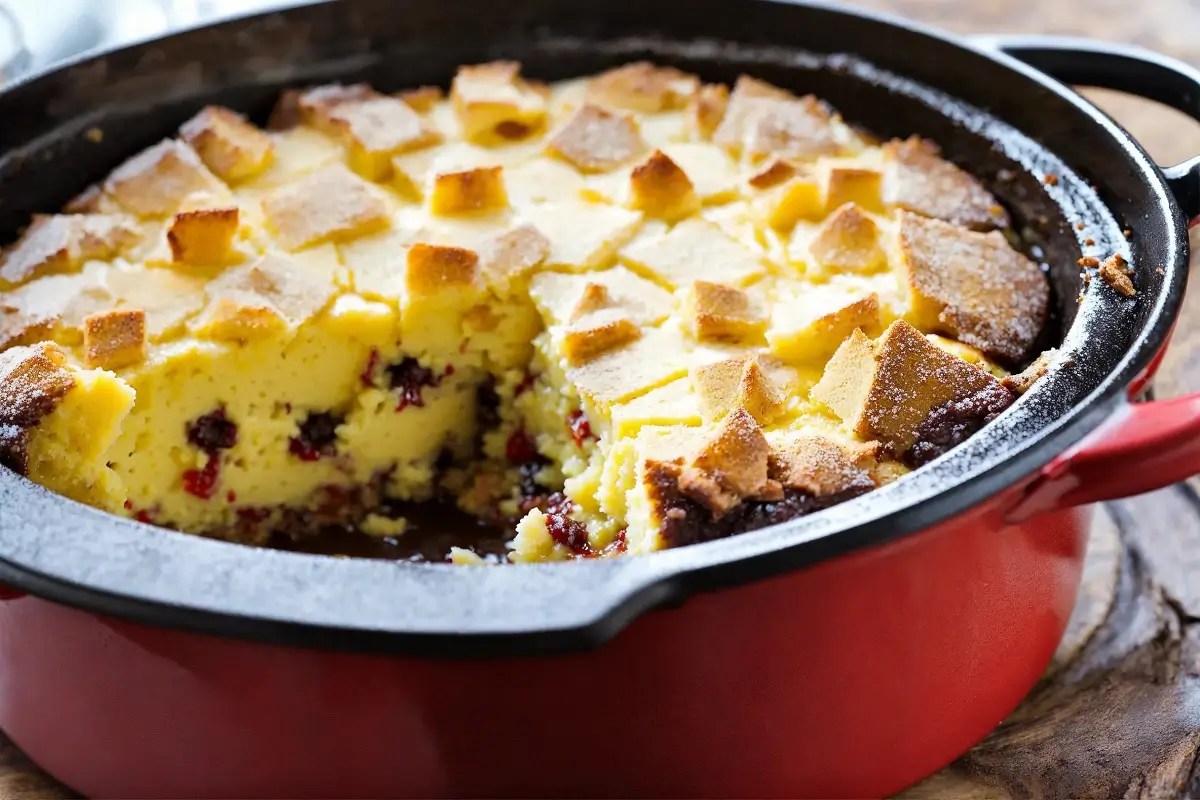Estimated reading time: 6 minutes
Introduction
Discover the delightful world of Dutch Oven Desserts, where traditional baking meets sweet indulgence. These desserts, ranging from cobblers to cakes, showcase the unique capabilities of Dutch ovens to evenly distribute heat and lock in flavors, making every bite a testament to the rustic charm of old-fashioned cooking. This guide will take you through the joys of creating mouth-watering sweets that combine the simplicity of classic ingredients with the culinary magic of the Dutch oven.
Why This Recipe/Project Is Special:
Dutch oven desserts stand out because they embody the essence of traditional cooking while offering a versatile platform for innovation. The ability to bake, stew, or roast in a single pot makes Dutch oven desserts a testament to culinary ingenuity and a nod to centuries of cooking traditions.
Ingredients
The ingredients vary widely among the top Dutch oven dessert recipes, ranging from the simplicity of an Angel Food Cake to the rich complexity of a Cola Chocolate Cherry Cake. Common ingredients include fresh fruits like apples and peaches, pantry staples like flour, sugar, and eggs, and unique additions such as cola for a moist and flavorful cake.
For a general overview of ingredients commonly used in Dutch oven desserts, here’s a list that captures the essence of these delightful recipes. Since specific ingredients vary widely depending on the dessert, this list includes common ingredients you might find across various Dutch oven dessert recipes:
Fruits
- Apples (for apple crisps or cobblers)
- Peaches (for peach cobblers or crumbles)
- Cherries (for cherry dump cake or cobblers)
- Blueberries (for blueberry cobbler)
- Blackberries (for blackberry dumplings)
Baking Essentials
- All-purpose flour (for cakes, cobblers, and breads)
- Granulated sugar (as a sweetener in most desserts)
- Brown sugar (for crumbles and crisps topping)
- Baking powder and baking soda (leavening agents)
- Eggs (as a binding and leavening agent)
- Butter (for richness and flavor)
- Vanilla extract (for flavor enhancement)
Specialty Ingredients
- Canned pie fillings (for easy dump cakes)
- Chocolate chips or cocoa powder (for chocolate desserts)
- Spices like cinnamon and nutmeg (for flavoring apple or peach desserts)
- Cornflakes or oats (for crispy toppings on crisps and crumbles)
- Cola (for a unique moistening agent in chocolate cakes)
Dairy
- Milk or cream (for richness in cakes and cobblers)
- Cream cheese (for cheesecakes or creamy desserts)
Others
- Canned biscuit or bread dough (for easy monkey bread or cinnamon rolls)
- Nuts like pecans or walnuts (for added texture and flavor in toppings)
Equipment Needed
The star of the show is, of course, the Dutch oven itself. Preferably a cast iron one with a snug-fitting lid to ensure even heat distribution and moisture retention. Other equipment might include mixing bowls, measuring cups and spoons, and a stirring utensil.
Essential Equipment
- Dutch Oven: The centerpiece of these recipes, a Dutch oven is a heavy cooking pot with a tight-fitting lid. It’s ideal for both baking and cooking, thanks to its ability to retain heat and distribute it evenly. Both cast iron and enameled cast iron Dutch ovens are suitable for desserts.
Preparatory Tools
- Mixing Bowls: You’ll need various sizes for mixing dry ingredients, wet ingredients, and any toppings or fillings.
- Measuring Cups and Spoons: Precision is key in baking, so a full set of measuring tools for both liquid and dry ingredients is essential.
- Whisk: For combining dry ingredients and ensuring there are no lumps in your mixtures.
- Spatula: A silicone spatula is useful for folding ingredients together and scraping the sides of bowls to ensure everything is well mixed.
- Electric Mixer: While not always necessary, an electric mixer can be helpful for recipes that require creaming butter and sugar or whipping cream.
Baking Accessories
- Parchment Paper: Useful for lining the Dutch oven to prevent sticking and make cleanup easier. This is optional and depends on the recipe.
- Cooling Rack: Allows air to circulate freshly baked goods, cooling them more quickly and preventing sogginess.
Additional Tools (Optional)
- Pastry Brush: For applying butter or glazes to the top of desserts.
- Knife or Pastry Cutter: For cutting butter into flour for crumbles or slicing fruits.
- Peeler: If using fresh apples or peaches, a peeler can speed up the prep work.
- Lid Lifter: If you’re baking over an open fire or coals, a lid lifter designed for Dutch ovens can be very handy.
Cleaning Supplies
- Non-Abrasive Scrubber: Especially important for cast iron Dutch ovens to maintain their seasoning and surface.
- Drying Towel: To immediately dry your Dutch oven after washing to prevent rust, especially if it’s cast iron.
This list covers the basics, but depending on the specific dessert you’re making, you might need additional tools. Always read through your recipe before starting to ensure you have everything needed for your Dutch oven dessert adventure.
Preparation
Preparation steps vary by recipe but generally involve mixing dry and wet ingredients separately before combining them. For example, the Dutch Oven Chocolate Dump Cake requires layering ingredients directly in the Dutch oven, while the Dutch Oven Cinnamon Roll might need dough to be prepared and shaped before baking.
Notes
Each recipe comes with its unique set of tips and tricks. For instance, using a liner can make cleanup easier, and preheating the Dutch oven can lead to a better crust on bread and cakes.
Conservation
Most Dutch oven desserts are best enjoyed fresh but can be stored in an airtight container for a few days. Some, like crisps and cobblers, can be reheated in the oven to restore their texture.
Accompaniments
- Preparation Time: Varies, from 10 minutes for simpler recipes to several hours for more complex ones.
- Cooking Time: Generally ranges from 30 minutes to over an hour, depending on the dessert.
- Total Time: Depends on the specific recipe, including preparation and cooking times.
- Servings: Typically, recipes serve 6-8, but this can vary.
- Nutritional Values: These will vary widely based on the ingredients used. Most Dutch oven desserts are indulgent, focusing more on flavor than calorie count.
FAQS
- Can I use a Dutch oven for desserts? Yes, both enameled and traditional cast iron Dutch ovens work, but each may impart different characteristics to your dessert.
- How do I prevent desserts from sticking to my Dutch oven? Proper greasing or using a parchment paper liner can help prevent sticking.
- Can Dutch oven desserts be made in advance? Many can be prepared ahead and either stored or baked just before serving.
Conclusion
Dutch oven desserts are a delightful blend of tradition, versatility, and flavor. Whether you’re a seasoned chef or a home cook, these recipes offer a way to explore culinary creativity while paying homage to the timeless joy of baking. Embrace the magic of Dutch oven desserts, experiment with flavors, and let your sweet tooth dance with delight. Cheers to the timeless joy of baking, Dutch oven style!
For more delicious Dutch oven recipes, visit Epicurious.

